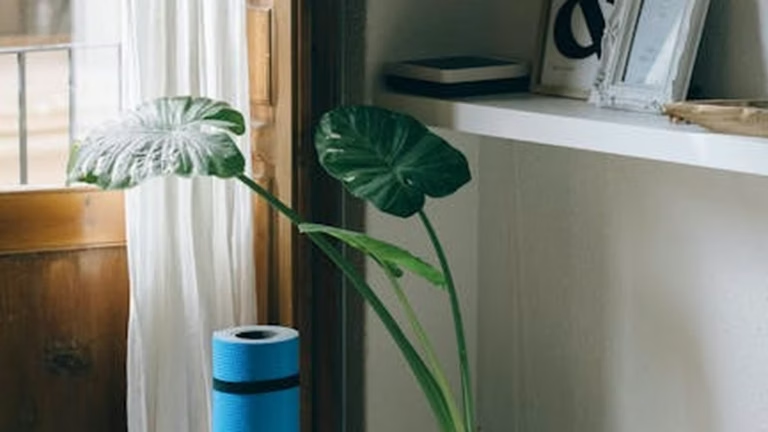October’s Mental Resilience: Navigating Seasonal Affective Disorder (SAD) with Light Therapy
October, with its crisp air, vibrant foliage, and pumpkin spice everything, can be a beautiful month. But for some, the shortening days and changing seasons bring a shadow – Seasonal Affective Disorder (SAD). Understanding SAD and exploring effective treatments like SAD Light therapy is crucial for maintaining mental resilience as we transition into the darker months.
Understanding Seasonal Affective Disorder
Seasonal Affective Disorder, often referred to as seasonal depression, is a type of depression that’s related to changes in seasons. It typically begins and ends around the same time each year. Most people with SAD experience symptoms starting in the fall and continuing into the winter months. While less common, some experience SAD in the spring and summer.
What Causes SAD?
The exact cause of SAD isn’t fully understood, but several factors are believed to play a role:
- Circadian Rhythm Disruption: Reduced sunlight in the fall and winter can disrupt your body’s internal clock (circadian rhythm), leading to feelings of depression.
- Serotonin Levels: A drop in serotonin, a neurotransmitter that affects mood, might play a role in SAD. Reduced sunlight can decrease serotonin levels.
- Melatonin Levels: The change in season can disrupt the balance of the body’s level of melatonin, which plays a role in sleep patterns and mood.
Recognizing SAD Symptoms
SAD Symptoms can range from mild to severe. Recognizing these symptoms is the first step toward seeking help:
- Persistent sadness or low mood
- Loss of interest or pleasure in activities you once enjoyed
- Changes in appetite or weight, often craving carbohydrates
- Sleep problems, typically oversleeping
- Fatigue and low energy
- Difficulty concentrating
- Feelings of hopelessness, worthlessness, or guilt
- Irritability
- Social withdrawal
The Power of Light Therapy for SAD
Light Therapy for SAD is a common and effective treatment. It involves sitting near a special lamp called a SAD Light box. This lamp emits a bright light that mimics natural outdoor light. The light is thought to affect brain chemicals linked to mood, easing SAD symptoms.
How Does Light Therapy Work?
The bright light from a SAD Light box is believed to stimulate the retina in the eye, which then sends signals to the brain. These signals can help regulate the production of serotonin and melatonin, improving mood and energy levels. Think of it as a sunrise in a box, helping to reset your internal clock.
Using a SAD Light Box Effectively
To get the most out of light therapy, follow these guidelines:
- Timing: Start using your SAD Light box in the early morning, ideally within the first hour of waking up.
- Duration: Most experts recommend 20-30 minutes of exposure per day, but this can vary depending on the intensity of the light box and individual needs.
- Distance: Follow the manufacturer’s instructions for the recommended distance from the light box. Typically, you’ll need to be about 12-24 inches away.
- Eye Protection: You don’t need to stare directly at the light, but it should be within your field of vision.
- Consistency: Use your SAD Light box daily, even on sunny days, to maintain consistent exposure.
Choosing the Right SAD Light Box
When selecting a SAD Light box, consider these factors:
- Light Intensity: Look for a light box that emits 10,000 lux (a measure of light intensity).
- UV Filter: Ensure the light box filters out harmful ultraviolet (UV) rays.
- Size and Portability: Choose a size that fits your needs and lifestyle. Some light boxes are small and portable, while others are larger and designed for home use.
- Safety Certifications: Check for safety certifications from reputable organizations.
Beyond Light Therapy: Holistic Approaches to October Mental Health
While SAD Light therapy is a powerful tool, it’s often most effective when combined with other strategies for boosting October Mental Health. Consider these complementary approaches:
- Regular Exercise: Physical activity releases endorphins, which have mood-boosting effects. Aim for at least 30 minutes of moderate-intensity exercise most days of the week.
- Healthy Diet: Focus on eating a balanced diet rich in fruits, vegetables, and whole grains. Limit processed foods, sugary drinks, and excessive caffeine.
- Social Connection: Stay connected with friends and family. Social interaction can help combat feelings of isolation and loneliness.
- Mindfulness and Meditation: Practice mindfulness techniques, such as meditation or deep breathing exercises, to reduce stress and improve mood.
- Talk Therapy: Consider talking to a therapist or counselor. Cognitive behavioral therapy (CBT) can be particularly helpful for managing SAD symptoms.
- Vitamin D Supplementation: Some studies suggest that vitamin D deficiency may be linked to SAD. Talk to your doctor about whether vitamin D supplementation is right for you.
Case Study: Sarah’s Success with SAD Light
Sarah, a 35-year-old teacher, had struggled with Seasonal Affective Disorder for years. Every October, she would experience fatigue, low mood, and difficulty concentrating. After consulting with her doctor, she started using a SAD Light box for 30 minutes each morning. Within a few weeks, she noticed a significant improvement in her energy levels and mood. She also incorporated regular exercise and mindfulness practices into her routine. Sarah now feels more resilient and able to navigate the challenges of the fall and winter months.
Treating Seasonal Depression: When to Seek Professional Help
Treating Seasonal Depression effectively sometimes requires professional intervention. If your SAD symptoms are severe or interfering with your daily life, it’s essential to seek help from a qualified healthcare provider. They can assess your condition, recommend appropriate treatment options (which may include medication, therapy, or a combination of both), and monitor your progress.
References
- Comprehensive guide to October’s Mental Resilience: Navigating Seasonal Affective Disorder (SAD) with Light Therapy – Medical Professionals
- Clinical study on October’s Mental Resilience: Navigating Seasonal Affective Disorder (SAD) with Light Therapy – Medical Research
- Medical information about October’s Mental Resilience: Navigating Seasonal Affective Disorder (SAD) with Light Therapy – Mayo Clinic
Conclusion
October doesn’t have to be a month of gloom and despair. By understanding Seasonal Affective Disorder and utilizing effective tools like SAD Light therapy, along with holistic lifestyle changes, you can proactively manage your mental health and embrace the beauty of the season. Remember, prioritizing your well-being is an act of self-care, and seeking help is a sign of strength. Take charge of your October mental health and thrive!






